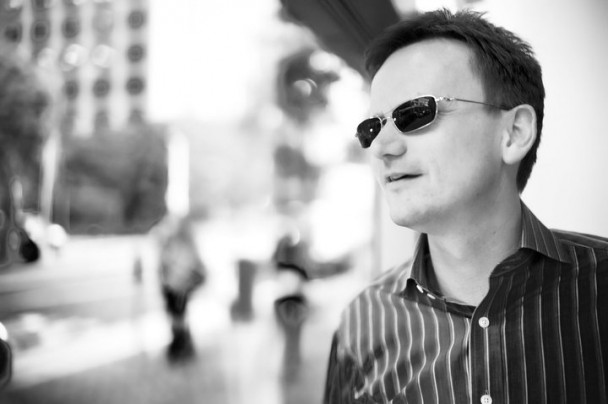
I am a tech entrepreneur, since 2013 focused on advancing the very foundation of tech at Diamond Foundry.
Born in Munich, Germany, as an Austrian citizen, I came to the Bay area to receive a PhD at Stanford University in computer science.
At Stanford, my intent was to work on AI as I had worked on emerging neural networks and been fascinated attending [backpropagation inventor] David Rumelhart’s research group meetings at Stanford during a summer. But it turned out there was no faculty in the area of neural networks at Stanford in computer science and, worse, the existing faculty was all the opposite, “symbolic systems” focused.
But it was right when Internet adoption started to take off. So I joined Terry Winograd’s group at Stanford, and enjoyed weekly research group meetings of five of us including Larry Page where we figured over time that it’d be good to try to use web links to create a better search engine.
Search was obviously big back then already but so was “group communication” as we called it initially, before “social” became the word to use. I focused on creating networks for Internet users to exchange ideas, sort of the earliest precursor of Facebook using email groups. Since Larry Page was adamant about not wanting to create a startup (and also explained me each week how bad advertising is), I recruited his brother and the engineer who had coded Backrub, the first version of Google, to create eGroups, which became one of the fastest growing consumer services in the late 1990s. Sequoia Capital funded us and I got my “MBA” from Michael Moritz in that way, who then served as Sequoia’s chairman for a long time.
After the dotcom bust, initially semi-retired after Yahoo! had purchased eGroups, I felt that there’s big industries, in particular energy, that could be transformed through a Silicon Valley type approach. Like making solar power ten times less expensive. So in 2002, I started Nanosolar and ran it for eight years until 2010 — as the longest serving CEOs in the solar industry back then.
Nanosolar was the first solar tech startup funded by American venture capital (Benchmark Capital) and became Silicon Valley’s solar flagship co as we were developing an ultra-low-cost solar cell and building two substantive high-tech fabs. I ran Nanosolar from zero to $2.1B in market value. Then I was forced out over our competitor Solyndra filing for an IPO ahead of us, and three years later, Nanosolar failed with inept leadership having been installed by investors.
In 2010, I adopted an embrace-don’t-compete attitude towards China and moved to Shanghai. I worked on creating a greentech park in Hu Jintao’s hometown and a battery company in China with the support of local investors and the government and gained some first-hand insight into how things work entrepreneurially on the ground over there. (Update: As of 2023, I still believe that trying to compete with China in materials tech is a rather bad idea.)
I keep trying to figure out the “high-beta tech economy” — an activity that tends to be as humbling as refreshing. I also find that stories we read and tell, in particular journalistic reporting, tend to succumb to “narrative fallacy”. So if this blog appears at times a bit non-linear, it may as well be closer to the truth.
I generally stay away from the tech conference circuit where CEOs or founders hang out with each other. (I do go where actual customers go.) I also do not take advisory roles and rarely if ever invest in startups. I prefer to be all in with my time on the business I’m actually in. (I led the first three rounds in my current company and invested in it seven times…)
Still through this blog, I am looking forward to occasionally share some perspective on things I find worth noting.